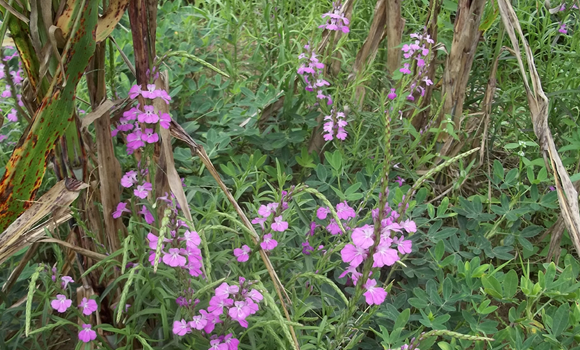Millions of people may someday owe a debt of gratitude to Peter McCourt, a scientist in Cell & Systems Biology in the Faculty of Arts & Science. He and his colleagues are dedicated to defeating a supervillain named Striga, a plant farmers simply call “witchweed.”
McCourt’s work on the noxious weed could tackle hunger and help save lives in places such as Africa, where Striga infests two-thirds of the arable land and is considered the single largest impediment to reducing poverty on that continent.
The pinkish-lavender plant is an “obligate parasite” that feeds off other plants, sucking nutrients from their host while the Striga flourishes and produces new seeds.
Each Striga produces thousands of dust-size seeds, which can lie dormant in the soil for decades, waiting for a host, which the Striga seed senses is nearby by detecting hormones the host exudes called strigolactones, at astoundingly minute levels of one part per trillion.

“There are not too many biological systems you can name that have that kind of sensitivity,” says McCourt, who was thrust to the forefront of the battle after he and his colleagues discovered the receptor gene that makes Striga so sensitive to strigolactones.
They cloned 11 receptor genes from Striga hermonthica and spliced them one by one into a model plant called Arabidopsis — considered the “fruit fly” for basic plant research because of its rapid life cycle and other characteristics that make it easy to use for experiments.
In the process, they identified a receptor called HTL7 that made Arabidopsis as sensitive to strigolactones as Striga. Their work appeared in the October 2015 issue of the journal Science, published by the American Association for the Advancement of Science.
Striga has evolved to exploit the true purpose of strigolactones, a chemical cue most plants produce to attract fungi in the soil that provide nutrients in exchange for carbon.
Equal parts detective story and counter-intelligence, McCourt and his team of geneticists, engineers and biologists are now researching ways to use Striga’s own uncanny abilities to destroy itself instead of the crops that farmers depend on.
Canadian researchers are uniquely positioned to experiment on Striga, which is so feared in the United States because of an outbreak in 1950s that the plant and its seeds are banned from being imported there, even for scientific experiments.
Since they’ve discovered what targets to go after, McCourt says the next step is to refine their understanding of Striga and what strigolactones are most important to each type and species. They can then produce tailor-made, economical “suicide germination” compounds that trick enough Striga into sprouting when there is no host around, so they starve to death and clear the fields of infestation.
“Just spraying strigolactones is not going to work, so we have to search for mimics that are a lot cheaper and more effective, and that’s the challenge,” says McCourt, who envisions they will also have to enlist the aid of agricultural experts in the developing world.
While the limited potential for profit in impoverished regions such as Africa does not motivate large corporate investment for this kind of research, McCourt says he’s encouraged by a new “philanthropic” business model that is emerging around malaria and other diseases.
“This isn’t about making money on the stock market,” he says. “It’s important that we help these people, and I do think that we can.”

